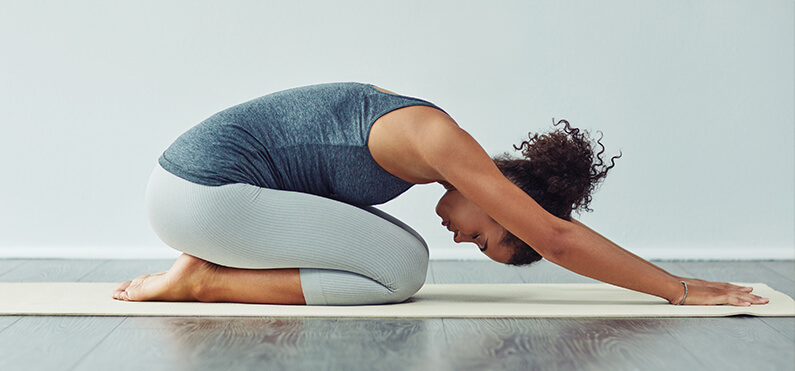
BENEFITS OF YOGA FOR ANXIETY
- December 22, 2021
- Posted by Dr. Vaidya Karanvir Singh
- 0 Comment(s)
Table of Contents
INTRODUCTION
- Yoga helpful in people suffering from anxiety.
- There is some evidence to suggest that it is useful particularly in people living with obsessive-compulsive disorder (OCD) and generalized anxiety disorder (GAD).
- Yoga is a form of exercise that includes stretching, breathing, relaxation, and meditation.
HOW YOGA HELP TO EASE ANXIETY
- Yoga give direct benefits to both the body and mind through reduce the symptoms of anxiety and stress.
- Yoga helps to induce a relaxation response and reduce heart rate on a psychological level, mindfulness promotes a focus on the present moment,
- Guiding thoughts away from anxiety and worry about future events.
PHYSICAL BENEFITS OF YOGA
- When people experiencing anxiety the “alarm center” located in the brain has gone into a state of high-alert.
- The deep breathing exercise associated with yoga speak directly to the amygdala to lower the state of arousal.
- Yoga activates the parasympathetic nervous system which encourages body relaxation.
Yoga also helps to:
- Lower blood pressure
- Reduce heart rate
- Release muscle tension
- Increase body awareness
- Aid in relaxation
PSYCHOLOGICAL BENEFITS OF YOGA
Yoga help in:
- Promote compassionate observation of the dialogue in your head
- Provide space for intentional thought patterns
- Aid in present-moment awareness
- Increase self-connection
YOGA POSES FOR ANXIETY
There are many types of yoga. Some popular forms include:
- Satyananda – This yoga includes gentle poses, deep relaxation, and meditation. It is suitable for beginners and reduce stress.
- Hatha yoga – One of the most popular forms of yoga
Hatha is also quite gentle.
It involves holding poses and concentrating on breathing.
Hatha yoga is suitable for beginners and reduce stress. - Power yoga – this yoga tends to be more intense and involves more movement through poses.
It focuses on fitness as well as relaxation. - Hero pose – this seated posture yoga can help to find your center.
Focusing on breath may help to find ease in the stillness of this pose.
Muscles worked:
- Erector spinae
- Quadriceps
- Knee muscles
- Ankle muscles
- Tree pose – This standing pose may help to focus inward, quieting racing thoughts.
Muscles worked:
- Abdominals
- Psoas
- Quadriceps
- tibialis anterior
- Triangle pose – This energizing yoga pose ease tension in neck and back region.
Muscles worked:
- latissimus dorsi
- Internal oblique
- Gluteus maximus and medius
- Hamstrings
- Quadriceps
- Standing Forward Bend – This resting standing yoga pose relax mind while releasing tension in body.
Muscles worked:
- Spinal muscles
- Piriformis
- Hamstrings
- Gastrocnemius
- Gracilis
- Fish pose – This backbend yoga pose relieve tightness in chest and back.
Muscles worked:
- intercostals
- Hip flexors
- Trapezius
- Abdominals
- Extended Puppy post – this yoga pose stretches and lengthens the spine and give relieve in tension.
Muscles worked:
- Deltoids
- Trapezius
- Erector spinae
- Triceps
- Child’s pose – This relaxing yoga pose help to ease stress and fatigue.
Muscles worked:
- Gluteus maximus
- Rotator muscles
- Hamstrings
- Spinal extensors
- Head-to-Knee Forward Bend – This pose may help soothe your nervous system.
Muscles worked:
- Groin
- Hamstrings
- Spinal extensors
- Gastrocnemius
- Seated Forward Bend – This yoga pose calm the mind while relieving anxiety.
Muscles worked:
- Pelvic muscles
- Erector spinae
- Gluteus maximus
- Gastrocnemius
- Legs-Up-the-Wall pose – This restorative yoga pose allows complete relaxation of mind and body.
Muscles worked:
- Hamstrings
- Pelvic muscles
- Lower back
- Front torso
- Back of the neck

Dr. Vaidya Karanvir Singh is the younger Vaidya in Chandigarh Ayurved & Panchakarma Centre. He is the fourth generation in his family who is practicing as a general consultant in Ayurved & Panchakarma treatment at Chandigarh. In his practice, he had treated more than 1 Lakh Plus patients worldwide.
Article by Dr. Karanvir Singh (M.D in AYURVEDA, PANCHAKARMA FAGE) and reviewed by Vaidya Jagjit Singh (B.A.M.S)

